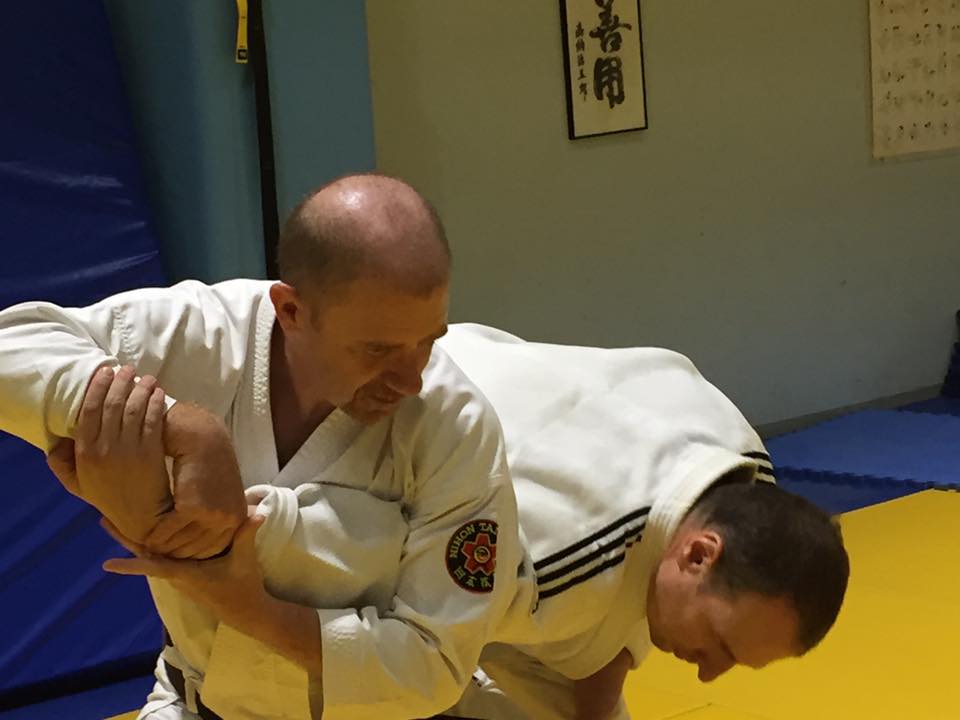This article was written by Hugh Stanley, who was the first in the dojo to get his Shodan in Nihon Jujutsu and Nihon Taijutsu after 6+ years of hard work at the dojo and at home.
I am not a brave man and pain hurts me.
That is one of the reasons why I started formal martial arts late in life. And it did hurt, just not in the way I expected. The physical pain was occasional and minor, resulting mostly from my inability to relax sufficiently to absorb and so negate whatever was inflicted on me during training.
What hurt most was my own ineptitude.
This was unexpected. I had a lifetime of involvement in contact sports – rugby, Gaelic football – and intensive activities such as squash, climbing

It wasn’t a lack of strength, stamina or flexibility (although I am sadly lacking in the latter). It was because the way I had used my body in all those other activities didn’t seem to work in the dojo.
I began experimenting everywhere – on the train, walking down the street, at work, at home, even lying in bed at night. If I was getting funny looks from strangers I was too inwardly focused to notice. It became clear that there were multiple ways to produce even the simplest movement, and complex, whole body movements became both triumphs of considered co-ordination and vexations of the spirit as I became increasingly aware of the inadequacies of what I was doing. I also became increasingly aware that this fundamentally was a solo journey. Although excellent guidance could be and was provided by those more accomplished, polished and talented than me, the truth is no-one knows your own body like yourself. No-one can explore it to the extent that you yourself can. If you don’t understand and feel your own physicality, no-one else can either. They can experience the results and tell you if it feels right or wrong, but they cannot experience, except in the broadest of strokes, what is going on inside your mind and body. It is essentially, fundamentally, a journey of self-discovery.
That is what the road to Shodan was for me. A journey of self -discovery, an examination

